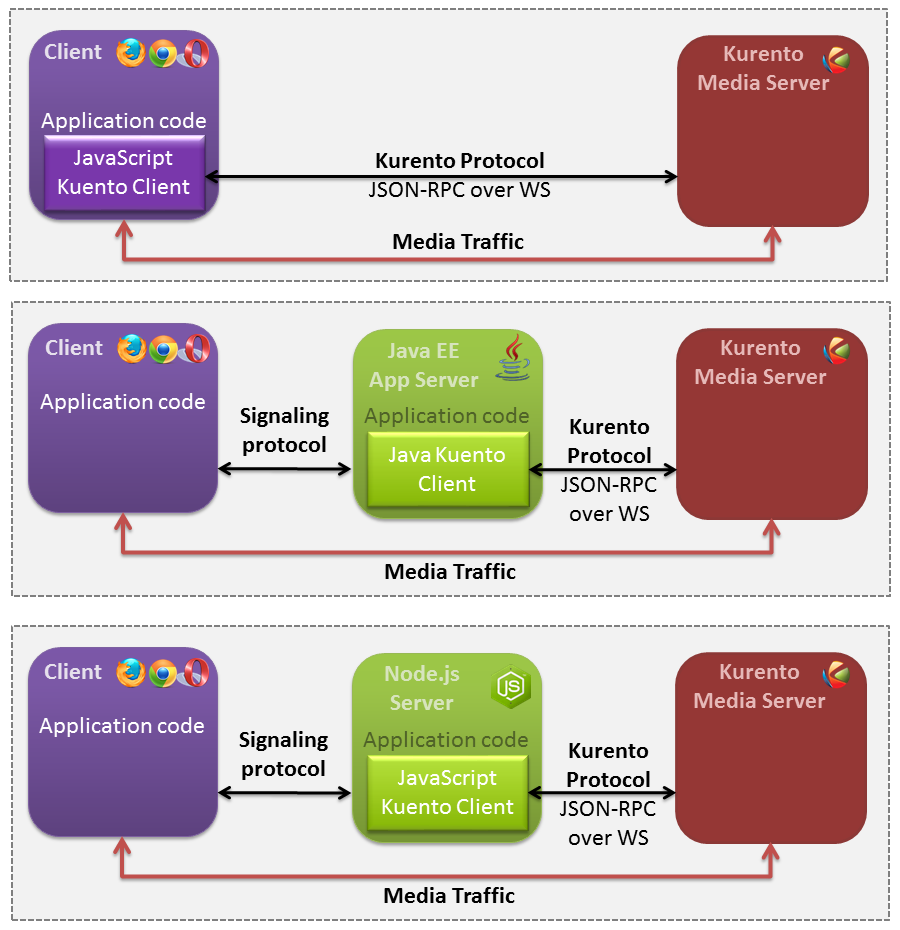What is the Architecture of a Kurento-enabled Application
Kurento Media Server capabilities are exposed by the Kurento API to application developers. This API is implemented by means of libraries called Kurento Clients. Kurento offers two clients out of the box for Java and JavaScript. If you have another favourite language, you can still use Kurento using directly the Kurento Protocol. This protocol allows to control Kurento Media Server and it is based on internet standards such as WebSocket and JSON-RPC. The picture below shows how to use Kurento Clients in three scenarios:
- Using the Kurento JavaScript Client directly in a compliant WebRTC browser
- Using the Kurento Java Client in a Java EE Application Server
- Using the Kurento JavaScript Client in a Node.js server
Kurento Client’s API is based on the concept of Media Element. A Media Element holds a specific media capability. For example, the media element called WebRtcEndpoint holds the capability of sending and receiving WebRTC media streams, the media element called RecorderEndpoint has the capability of recording into the file system any media streams it receives, the FaceOverlayFilter detects faces on the exchanged video streams and adds a specific overlaid image on top of them, etc. Kurento exposes a rich toolbox of media elements as part of its APIs.

